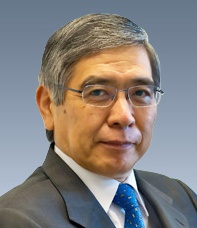BoJ keeps stimulus intact amidst slackening of exports
15 Jul 2015
 The Bank of Japan has lowered its growth forecast for the economy amidst a slackening of exports and decided to continue the present stimulus measures, hoping to push up domestic consumption and nudge inflation towards the 2 per cent target.
The Bank of Japan has lowered its growth forecast for the economy amidst a slackening of exports and decided to continue the present stimulus measures, hoping to push up domestic consumption and nudge inflation towards the 2 per cent target.
The central bank, however, kept its monetary policy unchanged. BoJ will also keep expanding base money at an annual pace of 80 trillion yen ($648 billion) via aggressive asset purchases.
Governor Haruhiko Kuroda, however, held off on offering fresh stimulus and maintained his optimism that the economy will emerge from a soft patch in the current quarter, helping inflation hit his target by around September next year.
The year-on-year rate of increase in the CPI is likely to be about 0 per cent for the time being, due to the effects of the decline in energy prices.
Compared with the forecasts presented in the April 2015 outlook for economic activity and prices, the growth rate will likely be somewhat lower for fiscal 2015, but will likely be more or less unchanged for fiscal 2016 and 2017, BoJ said in its monetary policy review.
The year-on-year rate of increase in the CPI will likely be broadly in line with the April forecast.
While BoJ is cautiously upbeat on economic growth, it is pinning its hope on China continuing to liberalise its markets despite the recent stock turbulence.
"Unless there is a huge delay in market liberalisation, China must and can engineer reforms that are in line with structural changes in its economy," Kuroda told reporters.
Japan's economy is widely seen to have entered a soft patch on weak exports and household spending, but analysts expect growth to pick up in July-September as rising wages lift consumption.
BoJ expects robust US demand to prop up growth, but pessimists in the board feel that shipments may remain soft for longer than expected given China's economic woes.
Japan's primary inflation will likely rise 0.7 per cent in the year ending March 2016, the BoJ said in its latest quarterly review of three-year growth and price projections.
The figure for the current fiscal year was down from April's forecast that the core consumer price index would rise 0.8 per cent.
The BoJ has lowered its forecast for this year for four straight quarters. It started revising the figure down in October, when it expanded its annual asset purchase target to the current 80 trillion yen a year.
The bank also cut its price forecasts for the following two years to 1.9 per cent and 1.8 per cent, respectively.
Japan's inflation fell to around zero in recent months, in a blow to the credibility of Governor Haruhiko Kuroda who launched the easing measures about two years ago with a promise to achieve 2 per cent inflation relatively quickly.
The latest price projections remain uncertain at best, as concerns remain over Greece's debt problems and slowing global growth that is threatening Japan's already slowing export-led recovery.
At its latest policy meeting, the BoJ policy board voted 8-1 to keep its annual asset purchase target unchanged, as was widely expected by the market. But pressure for fresh action could mount over the coming months if inflation doesn't stage a sharp recovery as promised by the BoJ.
The BOJ cut its growth projection for this year to 1.7 per cent from 2.0 per cent, the second straight quarterly downgrade.
For the year through March 2017, the BoJ predicted 1.5 per cent growth compared, unchanged. The bank projected a 0.2 per cent rise in the following year, also unchanged.